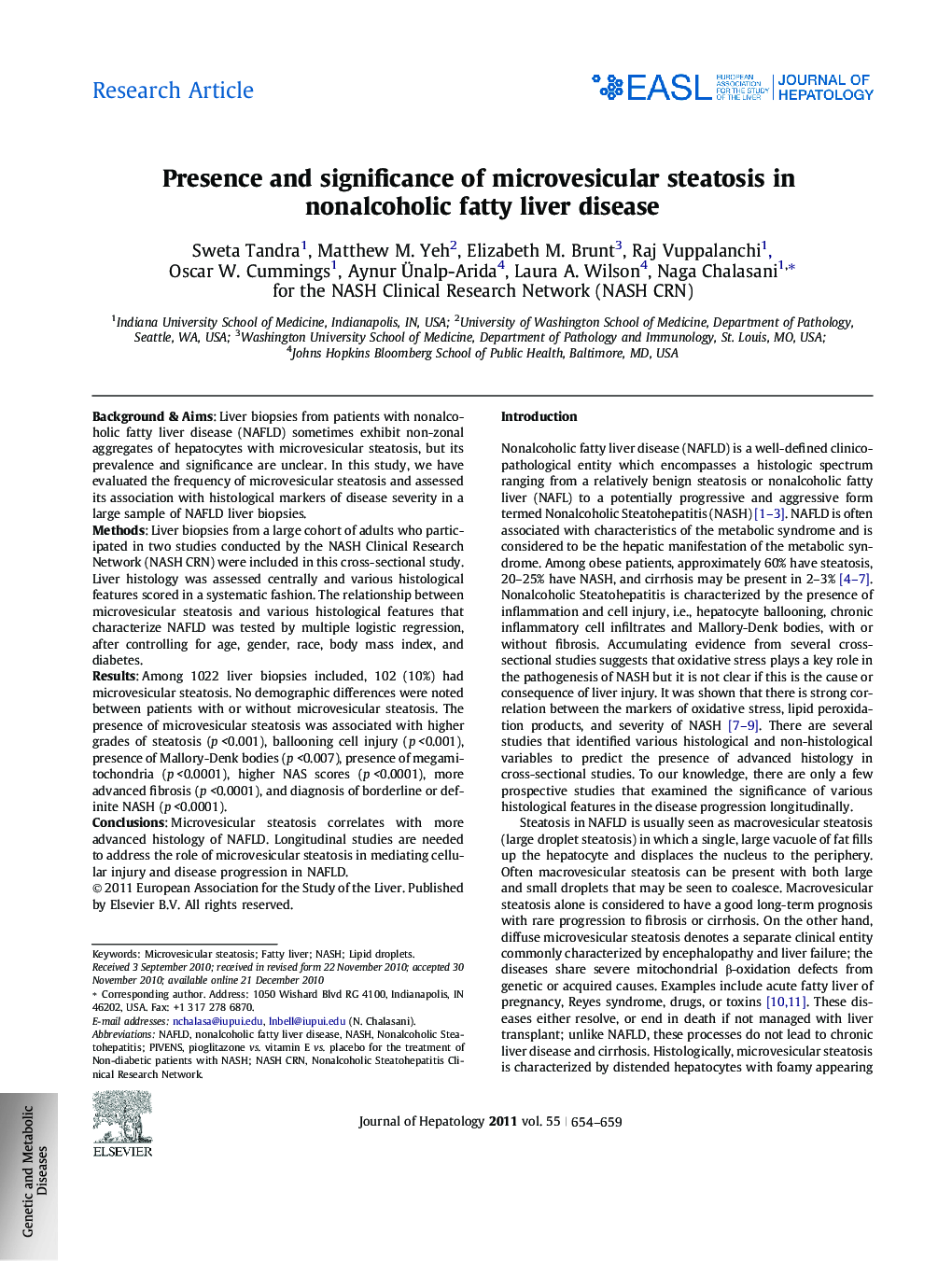| Article ID | Journal | Published Year | Pages | File Type |
|---|---|---|---|---|
| 6107775 | Journal of Hepatology | 2011 | 6 Pages |
Background & AimsLiver biopsies from patients with nonalcoholic fatty liver disease (NAFLD) sometimes exhibit non-zonal aggregates of hepatocytes with microvesicular steatosis, but its prevalence and significance are unclear. In this study, we have evaluated the frequency of microvesicular steatosis and assessed its association with histological markers of disease severity in a large sample of NAFLD liver biopsies.MethodsLiver biopsies from a large cohort of adults who participated in two studies conducted by the NASH Clinical Research Network (NASH CRN) were included in this cross-sectional study. Liver histology was assessed centrally and various histological features scored in a systematic fashion. The relationship between microvesicular steatosis and various histological features that characterize NAFLD was tested by multiple logistic regression, after controlling for age, gender, race, body mass index, and diabetes.ResultsAmong 1022 liver biopsies included, 102 (10%) had microvesicular steatosis. No demographic differences were noted between patients with or without microvesicular steatosis. The presence of microvesicular steatosis was associated with higher grades of steatosis (p <0.001), ballooning cell injury (p <0.001), presence of Mallory-Denk bodies (p <0.007), presence of megamitochondria (p <0.0001), higher NAS scores (p <0.0001), more advanced fibrosis (p <0.0001), and diagnosis of borderline or definite NASH (p <0.0001).ConclusionsMicrovesicular steatosis correlates with more advanced histology of NAFLD. Longitudinal studies are needed to address the role of microvesicular steatosis in mediating cellular injury and disease progression in NAFLD.
